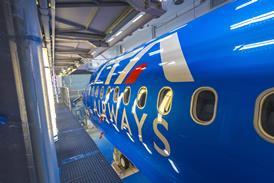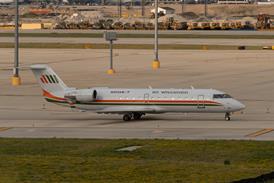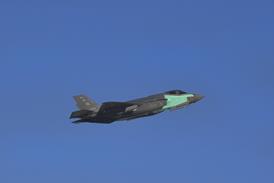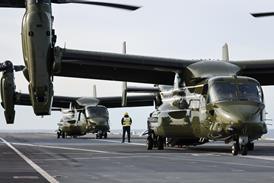Cathay is starting to realise the benefits of its Dragonair purchase and is now eager to find new synergies with Air China
Just over a year after completing its acquisition of Dragonair, Cathay Pacific Airways is looking to further grow its business in mainland China through more expansion at Dragonair and a closer relationship with Air China.
Cathay completed in September 2006 its landmark purchase of Dragonair, long targeted for its extensive network in mainland China. Cathay chief operating officer John Slosar says the number of connecting passengers between the two carriers, which had an interline arrangement before the deal but no codeshare, have since doubled. Dragonair will continue to operate under its own name for at least five years but the two now codeshare on every flight and have a co-ordinated schedule.
"We're extremely happy we did the deal when we did it and a year later we're still very happy we did the deal," Slosar said during a visit to London in early December. "We've already got quite a few benefits in the last 12 months. What this really was about was building the China network."
The merger instantly gave Cathay, which was only operating passenger services to two mainland destinations, access to 22 Chinese cities. China is now Cathay's sixth largest country in terms of sales but "we've hardly scratched the surface".
Slosar says Dragonair will add a few more destinations in mainland China but the initial focus has been adding capacity to second tier cities such as Hangzhou and Qingdao. Dragonair, which was serving several Chinese destinations only a few times per week, has been introducing "better and thicker flight schedules", allowing more connections in Hong Kong that "hit all the schedule windows".
The improved connections to mainland China are a key part of Cathay's strategy for growing its traditional long-haul markets as it takes delivery of 30 Boeing 777-300ERs. Cathay used its first batch of 777-300ERs to add in November a third daily flight to New York. It is also adding a third flight to Vancouver, a second flight to Toronto and extra frequencies to several Australian destinations. "We'll make it convenient so you can get to Hong Kong morning, noon or night and can connect to anywhere in China," Slosar says. "We want to make Cathay the perfect choice for business travellers to China."
To further "thicken" the Hong Kong hub, Cathay is also using Dragonair to launch services to new secondary Asian destinations it could not viably serve as an all-widebody operator. While Dragonair has dropped overlapping routes to large cities such as Bangkok and Tokyo, it has added smaller points such as Busan and Kathmandu and is seeking rights to Siem Reap.
The next step for Cathay is to even further improve its offering in mainland China through Air China, in which it has a nearly 20% stake. The carriers have been codesharing since 2005 but other areas of planned co-operation have been slow to materialise.
Slosar says "there is a natural fit between Cathay Pacific and Air China" but acknowledges Cathay first needs to improve Air China's service level. The medium-term vision is "great products on both airlines and impeccable service on both airlines".
He adds discussions that began in 2006 over launching a Shanghai-based joint venture cargo carrier are continuing. The new carrier will complement the dedicated cargo operations of Air China, Cathay and Dragonair, which combined operate about 40 747 freighters, by focusing on parts of China the trio currently do not serve.
"We want to make Cathay the perfect choice for business travellers to China"
John Slosar
Chief operating officer,Cathay Pacific
Source: Airline Business























